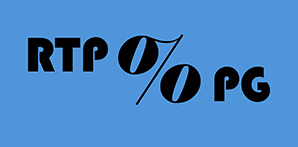 A new article of mine has been published in the Journal of Gambling Issues. It concerns the relationship between return-to-player (RTP) percentage and risk of problem gambling (PG). I conclude that the relationship is complex but that there is little that suggests – which some researchers and people in the gambling business belive – that a high RTP is a notable risk factor for PG.
A new article of mine has been published in the Journal of Gambling Issues. It concerns the relationship between return-to-player (RTP) percentage and risk of problem gambling (PG). I conclude that the relationship is complex but that there is little that suggests – which some researchers and people in the gambling business belive – that a high RTP is a notable risk factor for PG.
The article seems to be the first one discussing this issue that has been published in a peer-reviewed journal.
This article has been in and out of my drawer numerous times in the past eight years. Now when I am almost retired, I have had time to finish it.
Open access – link to PDF-file
Citation
Binde, P. (2024). The complex relationship between return-to-player percentage and problem gambling: A literature review and analytical framework. Journal of Gambling Issues, Advance online publication. https://doi.org/10.4309/EDYF9015
Abstract
Some gambling companies, regulatory authorities, and researchers consider a high return to player (RTP) percentage to be a risk factor for problem gambling (PG). If this is true, regulating RTP level could play a crucial role for preventing PG. However, there are no empirical studies confirming this assumption. The aim of this article is to review the literature and on basis of that discuss in what ways and to what extent RTP percentage might relate to the risk of PG. The method used is inductive reasoning based on the synthesis of earlier research, consideration of general theories on gambling behavior, and observations regarding gambling markets. The discussion is facilitated by a proposed analytical framework for understanding and exploring the complex relationship between RTP and PG. The main result the analysis is that high RTP forms of gambling are associated with PG primarily because of well-known PG risk factors that are commonly co-occurring with high RTP, such as rapid game frequency, high play continuity, and conspicuous sensory stimuli stimulating gambling. RTP in these forms of gambling cannot be significantly lowered because it would be commercially unviable. In forms of gambling in which RTP is relatively low but can be substantially increased, this may have effects that both heighten and lower the risk of PG. None of these effects are likely to be strong and might cancel each other out. The conclusion is that high RTP alone does not significantly contribute to the risk of PG.

